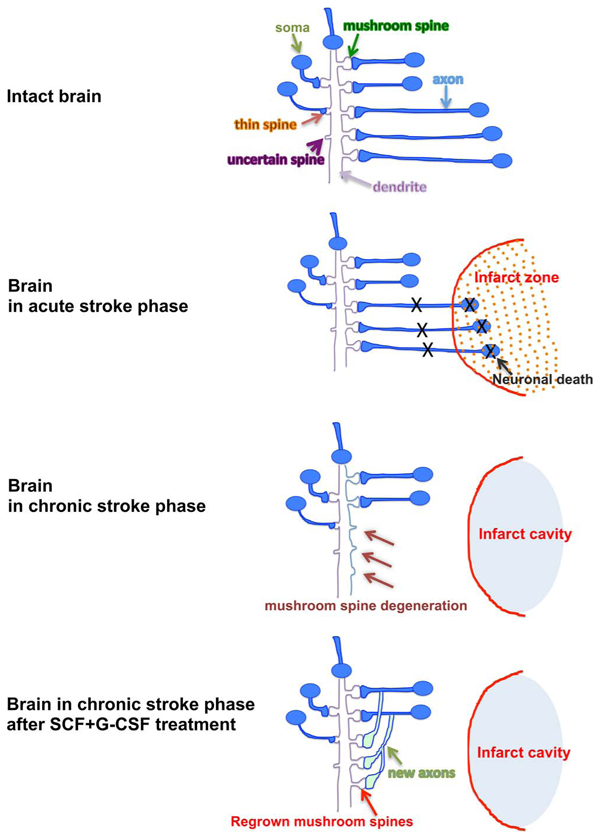Fig. 3.

Schematic diagram of synaptic networks in different conditions. In the condition of acute stroke, the mushroom type spines undergo retraction/degeneration in the surviving neurons outside the infarct core because the neurons that have synaptic connections with the surviving neurons die off in the infarct area. As a result, the number of the mushroom type spines is reduced and the number of the spines that are unable to form synapses (U-type) is increased in the peri-infarct-cavity cortex in the chronic phase of stroke. SCF + G-CSF treatment in the chronic phase of stroke enhances axon sprouting and mushroom spine formation, suggesting that the neural network rewiring in the peri-infarct-cavity cortex is enhanced by the treatment.
